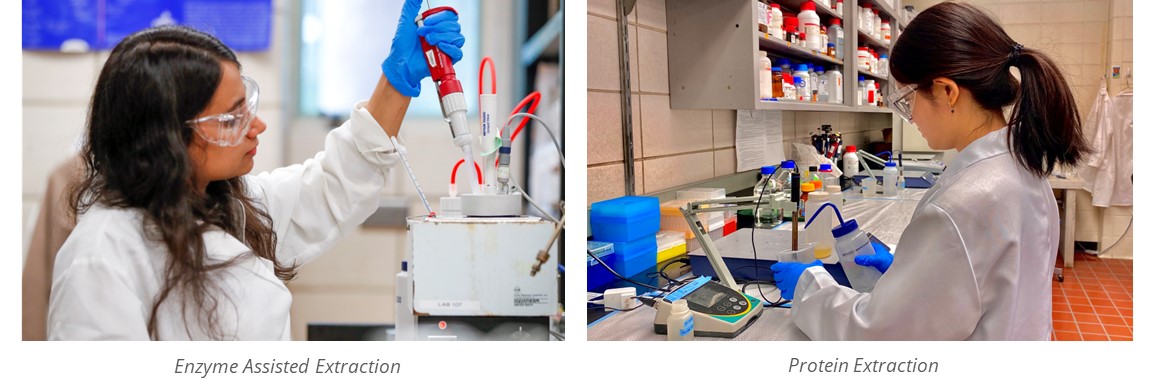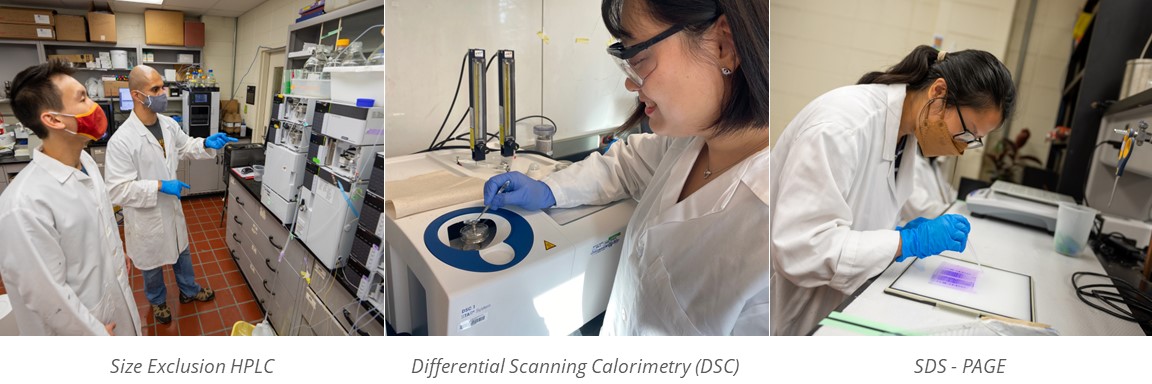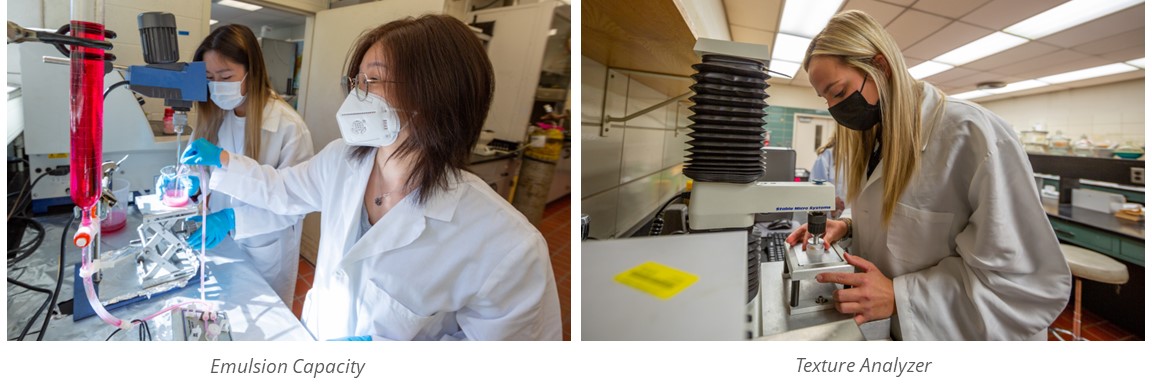Protein Extraction
Analysis |
Instrument(s) |
Purpose |
|---|---|---|
|
|
To extract protein from plants or alternative sources using alkaline methods |
|
|
To extract protein from plants or alternative sources by adding salt and using ultrafiltration |
|
|
To enhance protein extraction methods with appropriate enzymes |
Structural Characterization
Analysis |
Instrument(s) |
Purpose |
|---|---|---|
|
|
To determine the protein profile under reducing and non-reducing conditions To reveal polymerization and/or hydrolysis patterns, potential bonding mechanisms, and the prevalence of individual protein subunits |
|
|
To determine protein unfolding and subsequent polymerization driven by hydrophobic interactions To estimate hydrophobic surface area and changes throughout processing |
|
|
To estimate the net charge density on the surface To indicate any changes in surface hydrophilicity, protein unfolding, and possible interactions with macromolecules such as carbohydrates |
|
|
To indicate any protein unfolding and to reveal free SH that were previously entrapped in the three dimensional structure of the protein To determine the redox state of the protein |
|
|
To measure particle size of powders, liquids, and emulsions |
|
|
To determine the degree of hydrolysis and the extent of amine blocked by the Maillard reaction |
|
|
To determine the onset temperature of denaturation and the degree of unfolding as affected by processing or modification To estimate protein denaturation state |
|
|
To measure the distribution of secondary protein structures as affected by processing conditions or modification |
|
|
To determine the distribution of tertiary protein structures and intramolecular interactions as affected by processing conditions or modification |
|
|
To identify degree of polymerization, the extent of intermolecular aggregation with covalent and non-covalent linkages, and molecular weight of polymer distribution |
|
|
To visualize protein and particle dynamics (aggregation morphology) |
|
|
To determine the individual protein subunit/peptide molecular weights, which can be used for identification of different protein subunits To identify changes in proteins and peptides profile/distribution as affected by processing and/or enzyme modification To monitor the site of modification |
|
|
To separate and identify specific protein subunits |
|
|
To visualize protein-protein and protein-lipid interactions in dispersed systems while utilizing fluorescent probes |
Functional Characterization
Analysis |
Instrument(s) |
Purpose |
|---|---|---|
|
|
To determine the soluble protein in a protein-water dispersion by measuring the protein concentration of the dispersion before and after centrifugation to sediment insoluble proteins. |
|
|
To determine the amount of oil bound to the protein structure. Oil-binding capacity is related to a protein's surface hydrophobicity and influences its emulsification properties. |
|
|
To determine the amount of water bound to protein via hydrogen or ionic bonds. |
|
|
To determine a protein's ability to form a three-dimensional network with entrapped water. Gel strength measures the force required to rupture the gel. Least gelation concentration determines the lowest protein concentration at which a protein solution forms a heat-induced gel and holds its shape. |
|
|
To determine a protein's ability in a protein solution to produce a foam after agitation. Foaming stability, on the other hand, refers to the ability of a protein foam to remain stable over time, and against gravitational or mechanical stresses. |
|
|
To determine the quantity of oil a certain amount of protein can emulsify. Oil is titrated into a protein solution and emulsion failure is measured by a decrease in viscosity. |
|
|
To determine the amount of oil that can be emulsified per unit protein. Emulsification stability is given in the number of minutes that the emulsion will be stable. |
|
|
To determine L*a* b* values of protein ingredients as affected by extraction conditions, glycation, processing conditions, etc. |


